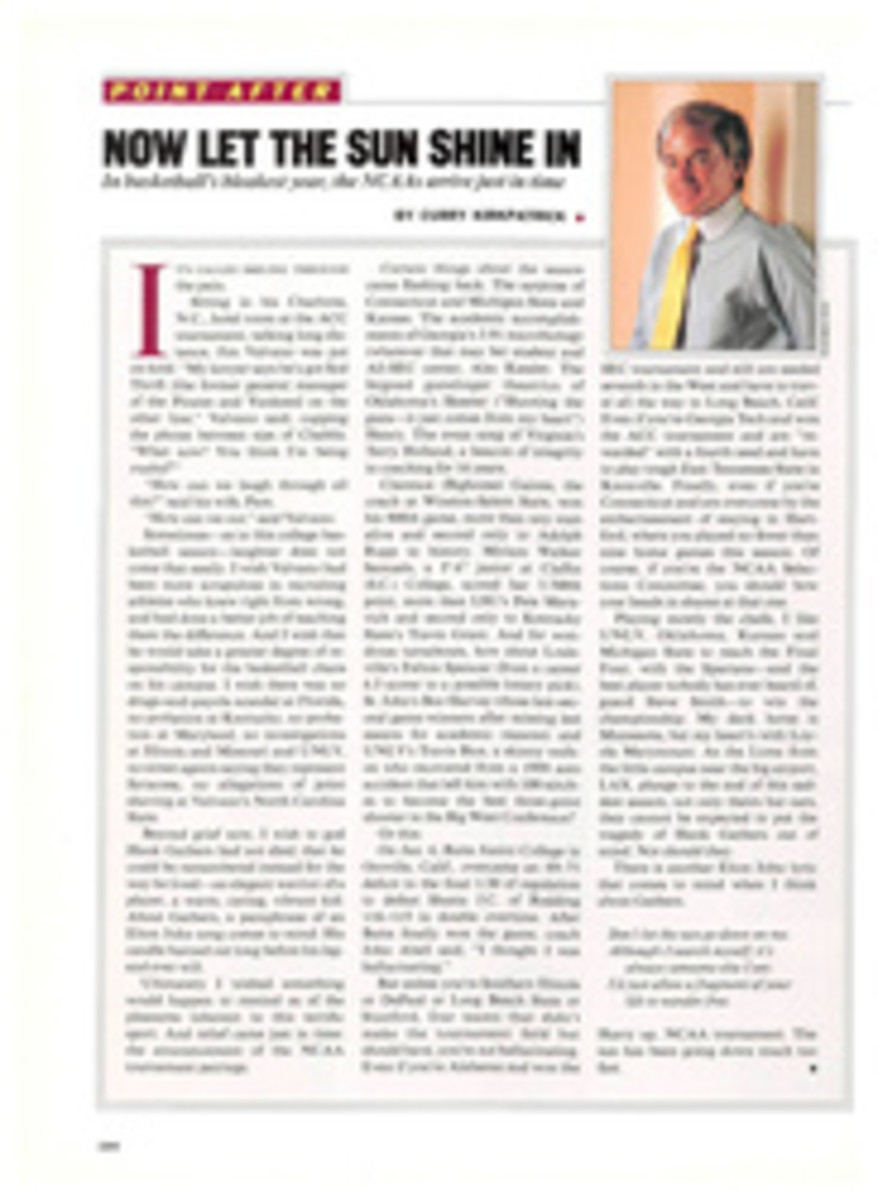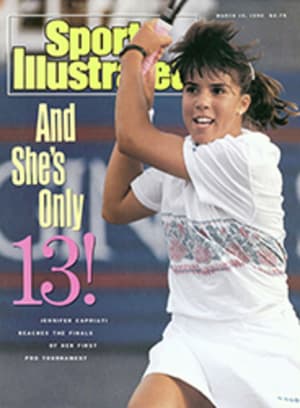
A HASTY CALL ON A FAST COUNT
Otto von Bismarck, the Iron Chancellor of the German Empire, once said that there were two things the public should not see being made: sausages and law. Thanks to the U.S. House of Representatives Subcommittee on Fisheries and Wildlife Conservation and the Environment, along with the state of Maryland and the Atlantic States Marine Fisheries Commission, Bismarck's argument in the latter instance has been made once again.
At issue is the commission's highly questionable decision to recommend relaxation of restrictions on striped bass fishing, a decision triggered by a highly questionable sampling of juvenile fish in Chesapeake Bay. Fishing for stripers, once the premier inshore game fish of the East Coast, has been all but stopped up and down the coast since 1985, when the number of bass spawning in Chesapeake waters remained alarmingly low following almost 15 years of poor reproductive performance. At first biologists blamed overfishing for the decline, but later they theorized that in addition, acid-rain storms were causing acidic "pulses," which were lethal to fish that had recently been spawned in the rivers that flow into the Chesapeake.
When Maryland imposed a moratorium on striper fishing five years ago, Torrey Brown, secretary of the state's Department of Natural Resources, said the ban "was the only prudent management option." Several months later the Atlantic States Marine Fisheries Commission announced that the ban would not be lifted until the young-of-the-year index for the bay reached a three-year running average of eight. The young-of-the-year index, which purports to measure reproductive success, is based on the average number of juvenile striped bass that are found in seines in three rounds of sampling each year at 22 sites in the bay.
Even as Maryland moved toward declaring a moratorium, Congress showed its concern by passing the Atlantic Striped Bass Conservation Act of 1984. This law required the 12 states and other members represented on the commission to adopt strict regulations consistent with the commission's management plan. As a result, most of the members prohibited commercial fishing for the species, and all have restricted recreational anglers to strict creel limits and minimum-size limits (to assure that any "keepers" have a few spawning seasons behind them). The regulations for all members were tied to the Maryland juvenile striper index, and were to remain until the index reached a three-year running average of eight.
Over the next few years the index never came close—in 1985 it was 2.9; in '86, 4.1; in '87, 4.8; and in '88, 2.7. Consequently, conservationists and anglers were astonished last August when Maryland governor William Schaefer proudly announced that the 1989 index was so high that limited sport and commercial fishing would again be permitted in the state, starting in the fall of 1990. The index number was a whopping 25.2, the second-highest in 36 years of record keeping. With the Maryland index serving as the impetus, in October the Atlantic States Marine Fisheries Commission agreed to ease striper restrictions. Each state can now allow the equivalent of 20% of its average annual catch for the period 1972-79, and the recommended size limits have generally been reduced from 34 or 36 inches to 26.
Instead of cheering the resumption of striped bass fishing, many anglers labeled the end of the moratorium hasty and unwise. Especially concerned were Jim Price, a charter-boat captain from Easton, Md., and Bob Pond, a lure manufacturer from South Attleboro, Mass., who also is executive director of Stripers Unlimited, an organization dedicated to restoring striped bass and their habitat. Because of their interest in the fish, Price and Pond had accompanied the Maryland biologists who compiled the index to several sampling sites last September, including Hambrooks Bar, at the mouth of the Choptank River. It was there, a month earlier, that in the two required seine hauls, 1,162 juvenile stripers were counted—that would be nearly 80% of the 1,487 total for the site, and nearly 35% of the 3,327 bass sampled in the entire bay for all of 1989.
"When only one site produces 45 percent of all the bass found in the Chesapeake, you don't have to be a biologist or a statistician to realize that something is very wrong," says Price. In a column written for New England Out of Doors Magazine, Pond wrote, "It is irresponsible to open the fishery [based] on one year-class, even if the results were representative."
Price points out that Hambrooks Bar is not the representative site it once was. The bar, which used to be part of the shoreline, has been eroded to the extent that the sampling site is now an island a quarter mile offshore. In September, when Price and Pond were with the state biologists, 60 juveniles were seined at the offshore site, but a shoreline haul yielded only four juvenile stripers. Take away the seine hauls at Hambrooks Bar, and the juvenile index for 1989 drops to about 15, an encouraging figure but one still so counter to the 15-year trend that to use it as justification for ending the moratorium seems reckless.
In January, Representative Gerry Studds (D., Mass.), chairman of the House Subcommittee on Fisheries and Wildlife Conservation and the Environment, scheduled a hearing on the commission's decision. This writer declined an invitation to testify but suggested two experts in fish-population dynamics: Dr. R. Ian Fletcher, chief scientist at the Great Salt Bay Experimental Laboratory in Damariscotta, Maine, and a professor of oceanography at the State University of New York in Stony Brook; and Dr. Douglas Heimbuch, vice-president of Coastal Environmental Services, Inc., in Linthicum, Md. In 1983, while at the Chesapeake Biological Laboratory, Heimbuch and two colleagues did an analysis of the Maryland index and concluded that it was so statistically flawed that it could show an increase in the population of fish when the population had actually declined.
The subcommittee did not ask either Fletcher or Heimbuch to testify. Instead, only two people opposed to the reopening were called: Price and Robert Lick, a member of the New Jersey Marine Fisheries Council. Four proponents of rescinding the moratorium spoke: John Turner, the director of the U.S. Fish and Wildlife Service; James Douglas Jr., acting assistant administrator in the National Marine Fisheries Service; Philip Coates, chairman of the striped bass management board of the Atlantic States Marine Fisheries Commission; and James Peck, assistant secretary of the Maryland Department of Natural Resources.
Studds set the tone for the day in his opening statement when he proclaimed, "We may indeed be witnessing one of the greatest fishery management success stories of our times.... Clearly there is reason for hope; clearly there is reason for pride in what has been achieved." But just as clearly, there is a great deal of concern over ending the moratorium.
Lick testified that he hoped the subcommittee could find out why the Atlantic commission was "so hell-bent on easing the restrictions on fishing." Price gave his testimony but was cut off when he started to read an extract from a statement written by biologist Joe Boone in which Boone termed the relaxation of fishing restrictions "premature." Boone had headed the Maryland index survey for 27 years before retiring in 1986. But the hearing ended with the subcommittee taking no action.
Says Fletcher, "Forget about Hambrooks Bar. As one is instructed in any elementary text on sampling: If one is to validly estimate the abundance of a population distributed in a space [such as Chesapeake Bay] from small samples drawn from the population, then either the population or the samplings must be distributed randomly over the space. If both are systematically distributed [as they are for the young-of-the-year index, in which the same 22 sampling sites have been used since the index was first undertaken in 1954], then the sampling design is invalid. The likelihood that false information follows from this invalid sampling design is so great that no prudent fishery manager would be so foolish as to set a significant regulation on its results."
Heimbuch declines to comment at this time. Nonetheless, given Heimbuch's past criticism of the Maryland index, combined with Fletcher's devastating analysis of the methodology of the index and with the opposition of Price and Pond—a charter-boat captain and a lure manufacturer who stand to make money upon the resumption of fishing—the subcommittee should convene a new hearing. The public and striped bass deserve no less.
PHOTO
BILL EPPRIDGE
Was 1989's proliferation of juvenile striped bass a portent or a statistical aberration?
PHOTO
BILL EPPRIDGE
Price is against lifting the moratorium.
PHOTO
BILL EPPRIDGE
The index is calculated from seine hauls made at 22 sites.
PHOTO
RICHARD TOMLINSON
Governor Schaefer wants to can the ban.

